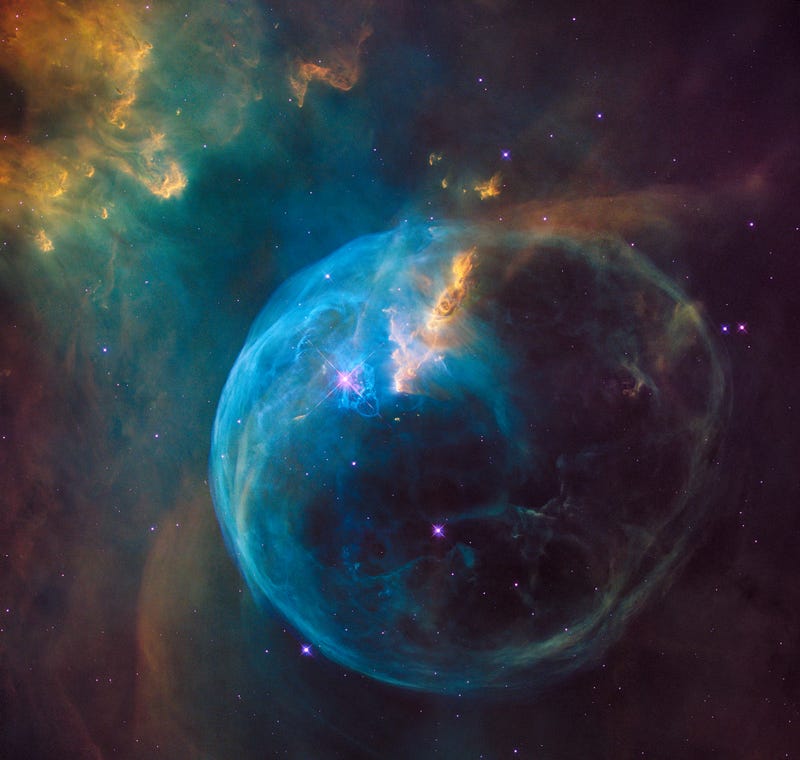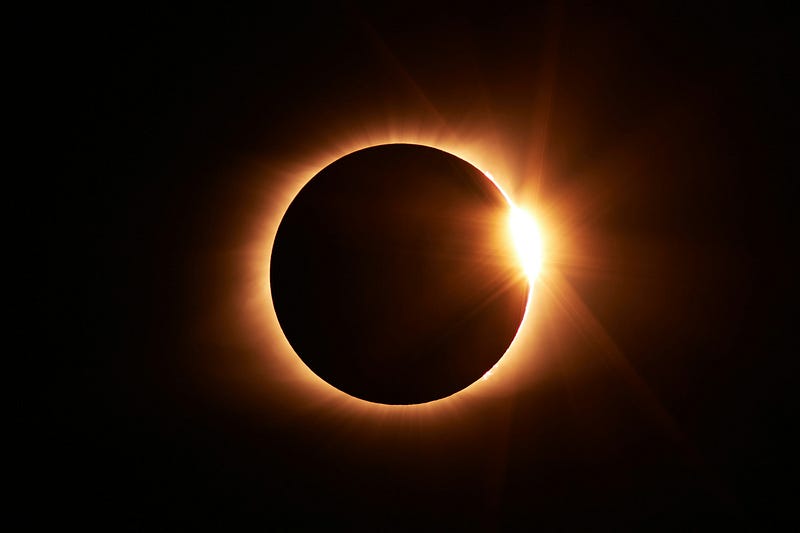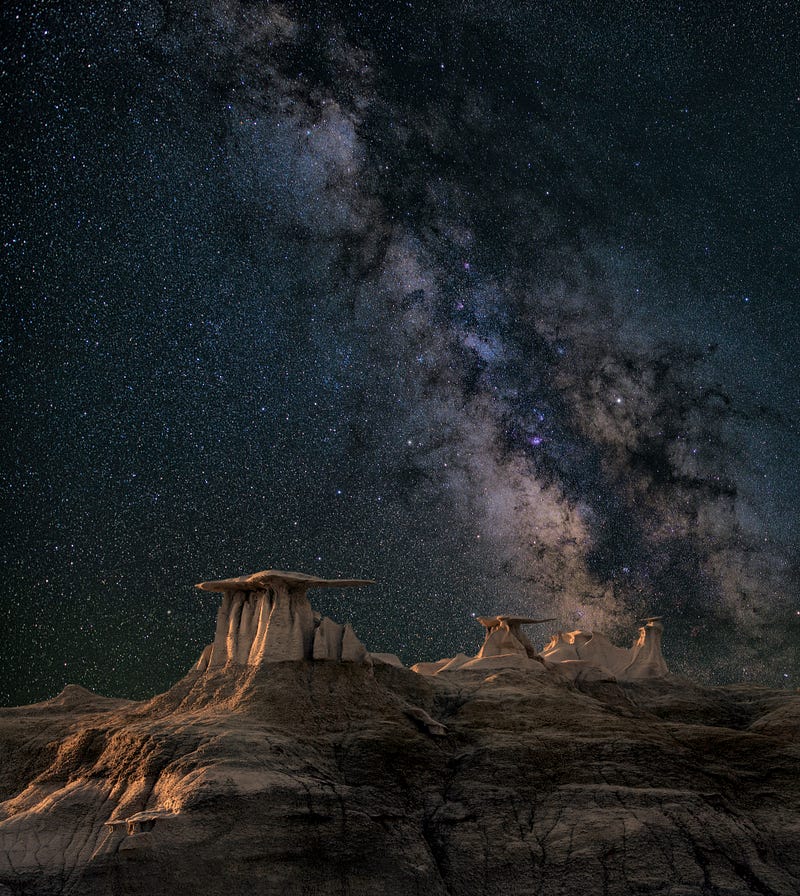Exploring the Interplay of the Multiverse and Divine Existence
Written on

The astonishing precision observed in our universe often leaves scientists in awe. The exact values of physical constants appear to be finely calibrated to support life, leading to the realization that even minor alterations could render the universe uninhabitable, devoid of stars, planets, and the vital chemical processes necessary for life.
This delicate balance raises significant inquiries about the universe's origins and architecture, compelling scientists to investigate the enigma of how such precise conditions came to exist. The improbable nature of these favorable circumstances ignites both wonder and inquisitiveness, motivating the pursuit of fundamental principles or explanations that could shed light on this fine-tuning phenomenon.
We invite you to delve into the exploration of the finely-tuned universe from both scientific and spiritual viewpoints.

The vastness of the cosmos has always intrigued humanity, prompting us to ponder the origins and structure of the universe and our place within it. The multiverse theory, emerging from various branches of physics and cosmology, introduces a revolutionary and thought-provoking notion: our universe is just one among possibly countless others.
At the heart of the multiverse hypothesis lies quantum mechanics. The many-worlds interpretation, though contentious, offers a captivating view of quantum events, suggesting that every possible outcome occurs, leading to multiple branches of existence. Each branch represents a distinct reality, potentially comprising every conceivable combination of physical laws and constants, indicating that a multitude of realities could exist outside our own.
Additionally, inflationary cosmology presents another fascinating aspect of the multiverse theory. It posits that the early universe experienced a rapid expansion phase known as inflation. If this inflation was not uniform, different regions may have stopped inflating at varying times, giving rise to isolated "bubble universes," each possibly governed by its own set of physical laws. This concept of inflation could result in a vast collection of universes, explaining the observed diversity through sheer statistical likelihood.
String theory further enriches the multiverse narrative, suggesting that fundamental particles are not mere points but tiny, oscillating strings. The oscillation patterns of these strings determine the properties of the particles they represent, allowing for numerous configurations that could manifest as distinct physical laws and constants. This implies that each unique configuration may govern a separate universe within the multiverse, providing a theoretical framework for the variety of possible physical realities.
The multiverse concept also aligns with the anthropic principle, which posits that we observe our universe in its current state because if it were significantly different, we would not exist to observe it. In a broad multiverse with diverse physical laws, it becomes likely that at least one universe would meet the conditions necessary for life, negating the need for a specific "designer" to adjust the universe for our benefit.
Furthermore, the multiverse hypothesis potentially addresses the "fine-tuning problem," which arises from the observation that various physical constants appear to be precisely set for the existence of stars, planets, and ultimately, life. The chances of these constants randomly falling within such a narrow range for life to thrive seem exceedingly slim. However, in a multiverse with infinite universes, it becomes statistically probable that at least one would possess conditions favorable to life, transforming our universe from an inexplicable rarity to an inevitable result within a broader cosmic landscape.
While the multiverse theory may lie beyond direct empirical observation, its ability to clarify the complexity and diversity of our universe is undeniable. It prompts us to reassess our place in the cosmos, shifting the focus from a singular universe to a vast array of possibilities. As technology evolves and our understanding deepens, the quest to unveil the mysteries of the multiverse promises to remain an intriguing and ongoing endeavor.

The God hypothesis proposes that a divine creator or supreme being is the primary cause or explanation for the universe's origin, structure, and purpose, including its laws, complexity, and the existence of life.
The fine-tuning dilemma, which highlights the seemingly improbable arrangement of physical constants necessary for life, invites various interpretations. The God hypothesis, distinct from scientific perspectives, presents an explanation based on faith and the notion of a divine creator.
At the core of the God hypothesis is the concept of intentional design. The intricate and life-sustaining nature of the universe is viewed as the result of a creator who intentionally crafted it with specific conditions in mind. The seemingly improbable values of physical constants and the laws of physics are perceived not as random occurrences but as deliberate choices made by a designer, suggesting a purposeful act rather than a mere coincidence.
Proponents of the God hypothesis often find it to be a straightforward and cohesive framework. It provides a unified answer to the question of why the universe is conducive to life, avoiding the need for abstract and unobservable ideas like the multiverse. For many, invoking a divine creator offers a clear explanation that resonates with their beliefs and understanding of existence.
However, the God hypothesis transcends empirical science, entering the realms of philosophy and theology. It engages with profound questions about the universe's origin, purpose, and meaning through religious and metaphysical lenses. This approach differs from scientific inquiry, which relies on evidence and testable explanations within the natural world. Advocates of the God hypothesis may argue that the limitations of scientific inquiry necessitate considering supernatural explanations when faced with the universe's complexity and fine-tuning.
The epistemological distinctions between the God hypothesis and scientific theories are significant. The God hypothesis operates outside the boundaries of methodological naturalism, the guiding principle of scientific inquiry that seeks natural explanations for natural phenomena. Rooted in faith and metaphysical considerations, the God hypothesis contrasts with scientific hypotheses evaluated through empirical evidence.
In summary, the God hypothesis provides a unique perspective on the fine-tuning problem. While it does not conform to scientific inquiry principles, it resonates with individuals seeking meaning in the idea of a divine creator. Recognizing the fundamental differences between this approach and scientific explanations is essential for understanding the varied ways humans confront the universe's mysteries.

Some assert that we have only two choices: a God who created the universe and life through supernatural means, or a universe without God, suggesting these are not the only options.
One notable perspective on explaining the seemingly fine-tuned universe is the concept of Non-Overlapping Magisteria (NOMA), famously introduced by Stephen Jay Gould. This framework posits that science and religion occupy separate realms of inquiry. Science investigates the empirical world, constructing frameworks based on observable evidence, while religion addresses profound ethical and existential questions that often transcend the material realm. Within this framework, multiverse theory does not necessarily challenge the existence of God, as the divine resides in a different domain.
Yet, other perspectives dispute this clear-cut separation. Some theistic traditions easily reconcile the multiverse with the existence of God, proposing that the divine is the creator of the multiverse itself. This suggests that God did not solely create our particular universe but established the laws and constants that govern the multitude of universes within the multiverse, integrating the multiverse into a broader divine plan.
Moreover, it is vital to recognize the significance of metaphysical and theological interpretations. These interpretations provide a distinct layer of understanding that may surpass scientific explanations. From this viewpoint, God's existence is not solely dependent on deciphering the universe's physical complexities; it is rooted in deeper philosophical and theological frameworks that seek meaning beyond the material. The multiverse, even if it offers a scientific explanation for our universe's fine-tuning, may not inherently challenge faith-based beliefs.
Additionally, we must consider the limitations of scientific explanations. Even if the multiverse theory effectively accounts for the fine-tuning observed in our universe, it may merely prompt further existential inquiries. Questions such as why the multiverse exists or why physical laws vary across universes may remain outside the scientific realm, inviting additional interpretations, potentially of a theological nature.
Ultimately, the connection between the multiverse and the divine heavily depends on one's definition of God. Different religions and philosophical systems present diverse views of the divine. For some, God is intricately woven into the physical universe, with its design reflecting God's active presence. For others, God embodies a more abstract principle, existing beyond the universe and not intervening in its workings. The implications of the multiverse may significantly challenge specific interpretations of God while leaving others relatively unaffected.

The interaction between the multiverse and divine hypotheses provides a rich area for exploration, moving beyond the binary view of purely scientific or theological explanations for the universe. It highlights the intricate challenge of reconciling the vast theoretical possibilities of the multiverse with deeply personal, faith-driven beliefs in a divine creator. The concept of Non-Overlapping Magisteria (NOMA) proposes a harmonious coexistence between science and religion, each addressing distinct areas of human understanding. However, the dialogue between these perspectives often overlaps, challenging the boundaries of our knowledge and beliefs.
Some theological interpretations embrace the multiverse as part of a divine creation, suggesting a God that transcends our universe's confines and is the architect of an entire multiverse. Each universe within it serves as a testament to the divine's boundless creativity, expanding the concept of God beyond traditional boundaries. Conversely, others argue that the specific intention behind the universe's fine-tuning indicates a God intricately involved in the details of creation, suggesting a universe uniquely designed for life. These differing views exemplify the diversity within theological thought, illustrating how the divine concept can vary widely across belief systems.
As scientific understanding progresses, it may bring us closer to deciphering the mechanisms underlying the universe's fine-tuning. Nevertheless, fundamental existential questions about purpose and meaning may forever reside within the realms of personal belief and philosophical inquiry. Whether viewed through scientific, religious, or a combination of both lenses, the quest to understand the universe's origins and structure remains one of humanity's most profound endeavors, urging us to seek insights beyond the observable, venturing into the theoretical and the divine.